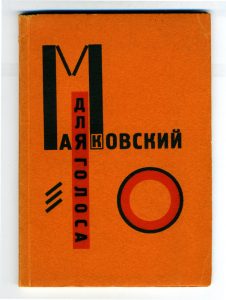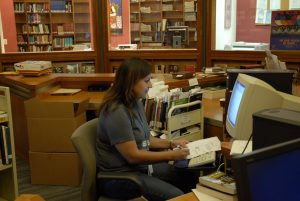With Halloween just around the corner, this is the perfect time to flip through candy-related trade catalogs. Today, with the mass production of products, we might not think about how things were made in the past. To make candy, ingredients needed to be grated, peeled, granulated, and cut. What machines performed that work? And how long did it take?
Smithsonian Libraries and Archives / Unbound
The conservation of special collections materials is rarely a straightforward endeavor. It’s important to treat each item as a unique object, and to let its particular history and condition drive the decision-making process. Often, the path forward is only revealed once treatment begins, as the conservator becomes more and more familiar with the book, sometimes through research and analysis, but often simply by observing and handling the book over a period of time.
The Smithsonian Libraries is currently accepting applications for Spring 2016 internships. These projects would be great educational experiences for library science students performing work for practicum or field study requirements. more »
Readers of the Sunday Washington Post are familiar with the weekly feature called, ‘5 Myths” where misconceptions about certain timely topics are discussed and debunked. (A recent issue clarified some popular myths about giant pandas, calling on the expertise of Dr. Bill McShea of the Smithsonian Conservation Biology Institute). It may be helpful to point out some things about the Smithsonian Research Online (SRO) program that might be misunderstood by researchers and Smithsonian staff.
 This post was written by Stephen Van Dyk, Librarian, Cooper Hewitt, Smithsonian Design Library.
This post was written by Stephen Van Dyk, Librarian, Cooper Hewitt, Smithsonian Design Library.
The Cooper Hewitt, Smithsonian Design Library recently obtained this renowned example of early 20th century book and graphic design entitled Dlja golosa (For the Voice), published in Berlin in 1923. The sixty-one page softcover work, a collaboration of Russian poet Vladimir Mayakovsky (1893-1930) and designer El Lissitzky (1890-1941), rhythmically interlaces innovative constructivist style layouts and patterns with thirteen futurist poems.
 The Smithsonian Libraries is pleased to offer a call for applicants for the 2016 Neville-Pribram Mid-Career Educators Award. The Vine Deloria, Jr. Library for the National Museum of the American Indian (NMAI) is the host library for the selected 2016 Educator. In operation since 1999, the Deloria Library is the 20th library of the Smithsonian Libraries and is located in Suitland, MD in the NMAI’s Cultural Resources Center (CRC) where it shares research and collection space with the NMAI Archives.
The Smithsonian Libraries is pleased to offer a call for applicants for the 2016 Neville-Pribram Mid-Career Educators Award. The Vine Deloria, Jr. Library for the National Museum of the American Indian (NMAI) is the host library for the selected 2016 Educator. In operation since 1999, the Deloria Library is the 20th library of the Smithsonian Libraries and is located in Suitland, MD in the NMAI’s Cultural Resources Center (CRC) where it shares research and collection space with the NMAI Archives.
This is a two-part series on the Hewitt sisters. Read part one.
By 1897, Sarah and Eleanor had collected enough to formally open their museum on the fourth floor of the Cooper Union. In the tradition of their grandfather, the Hewitt sisters wanted to actualize a museum and library that were not just a showcase, but also tools—places that students and designers could come to for reference and inspiration, then go out and create their own innovative objects. In the birth of the Cooper Union Museum for the Arts of Decoration, the sisters embodied the increasingly democratic attitudes that grew to dominate the 20th century. Their museum was to be open to everyone, with “no tedious restrictions and formalities,” which were often imposed by the exclusive art galleries of the era. Indeed, their museum provided a means for many women to gain economic independence through art and design.
